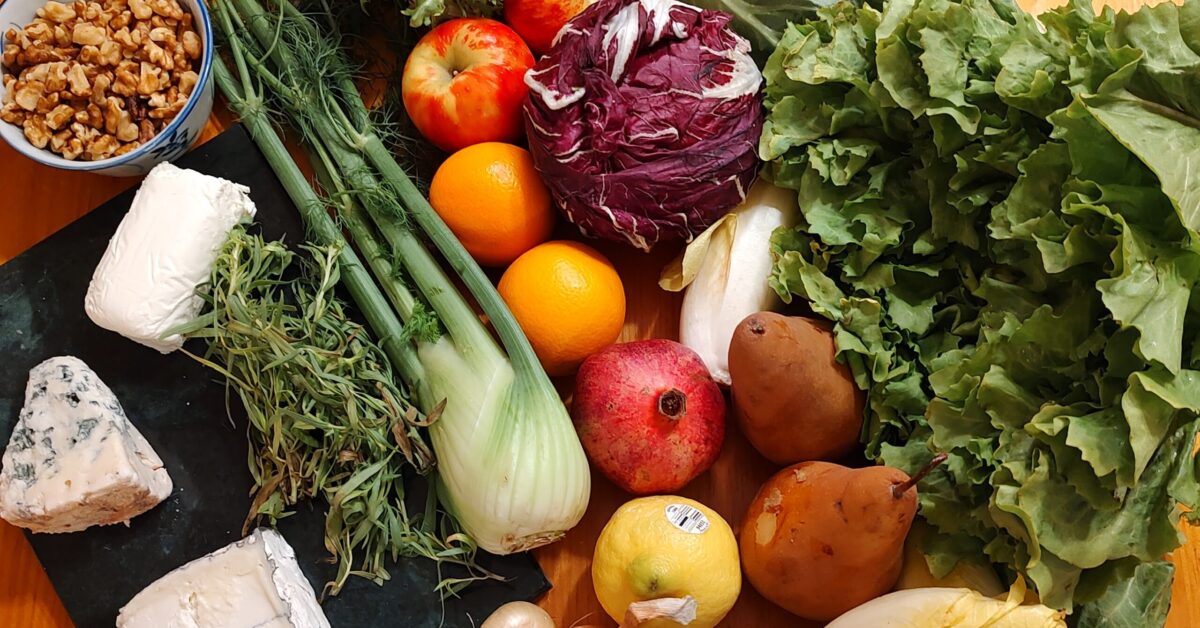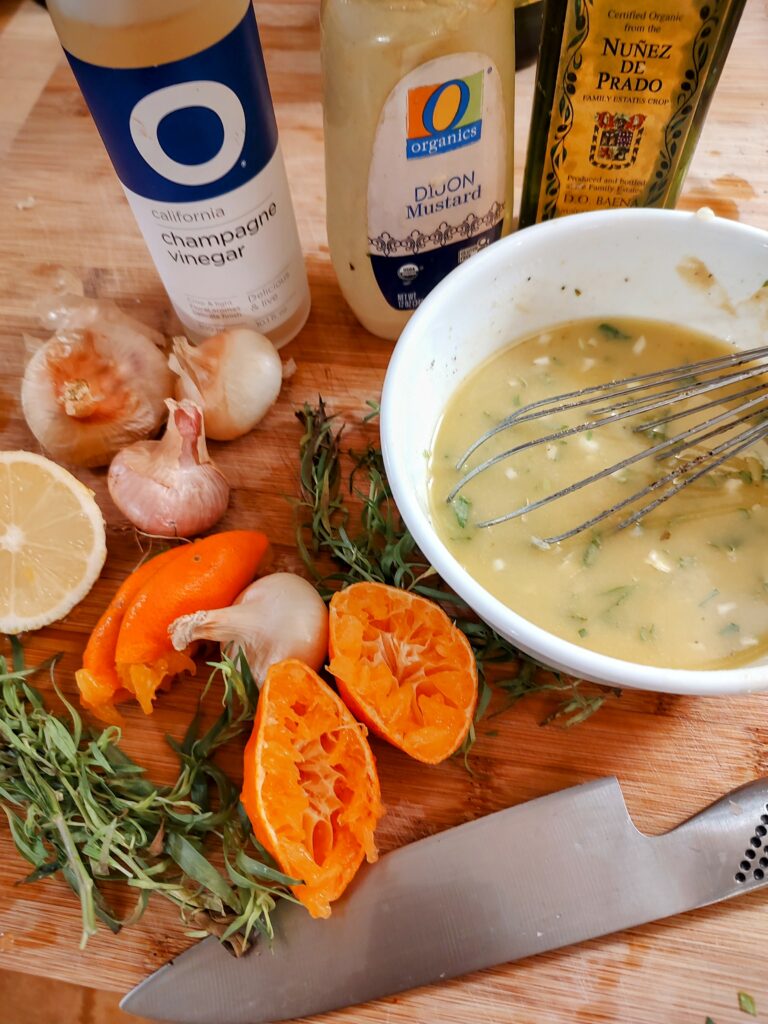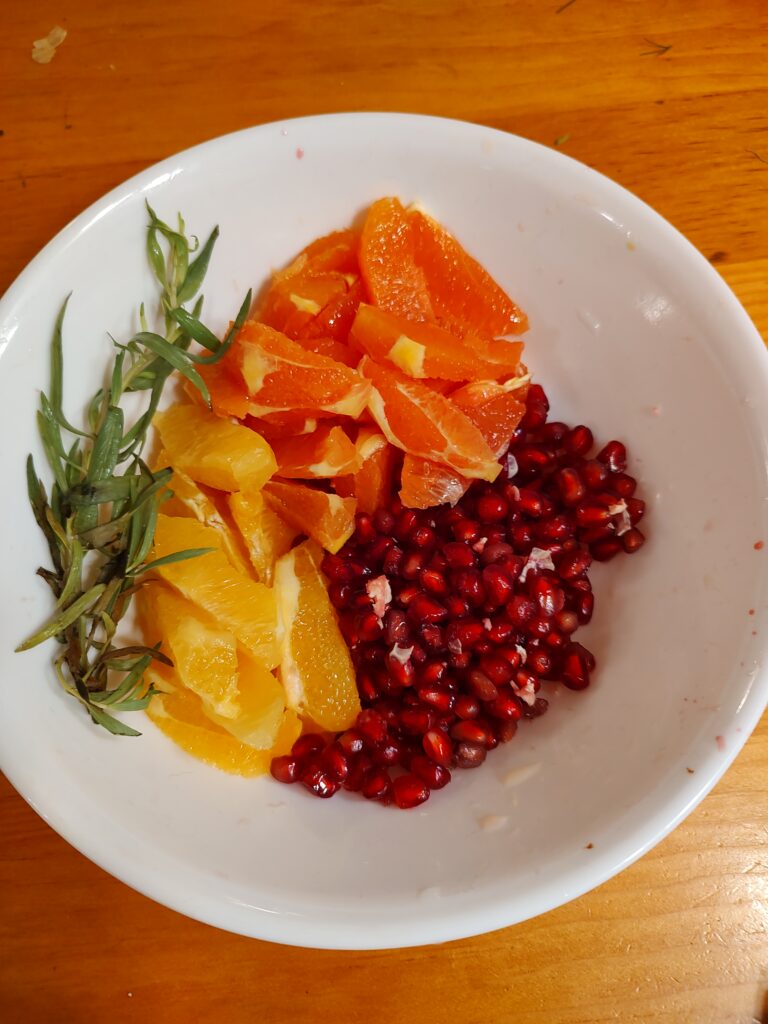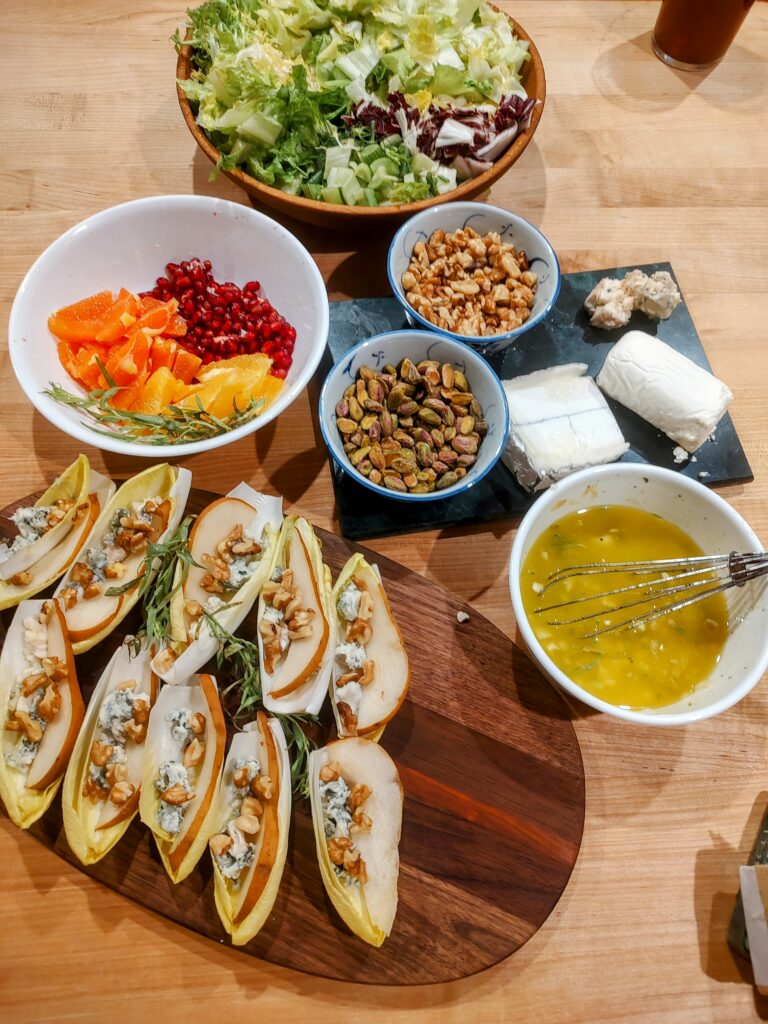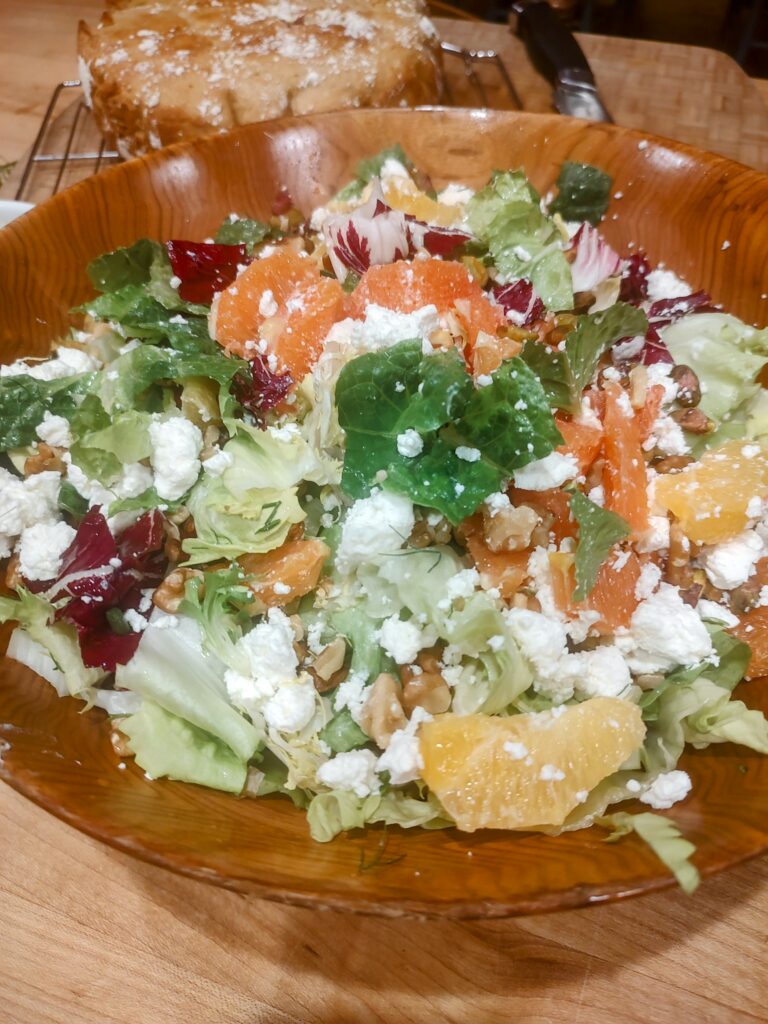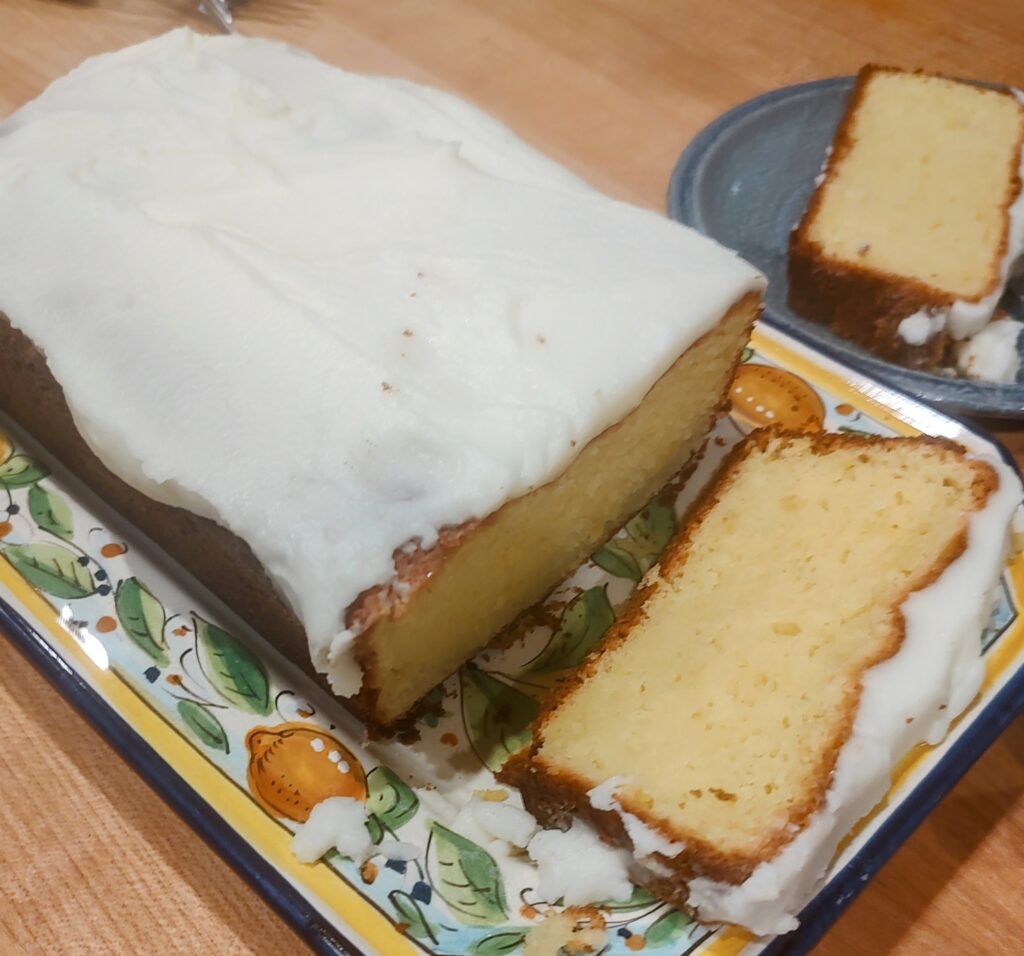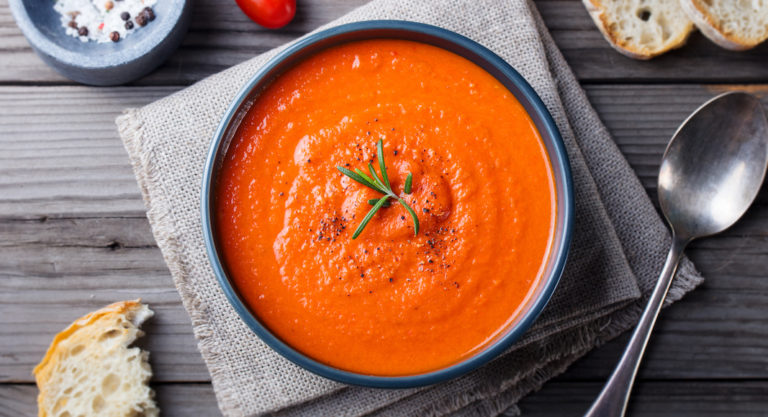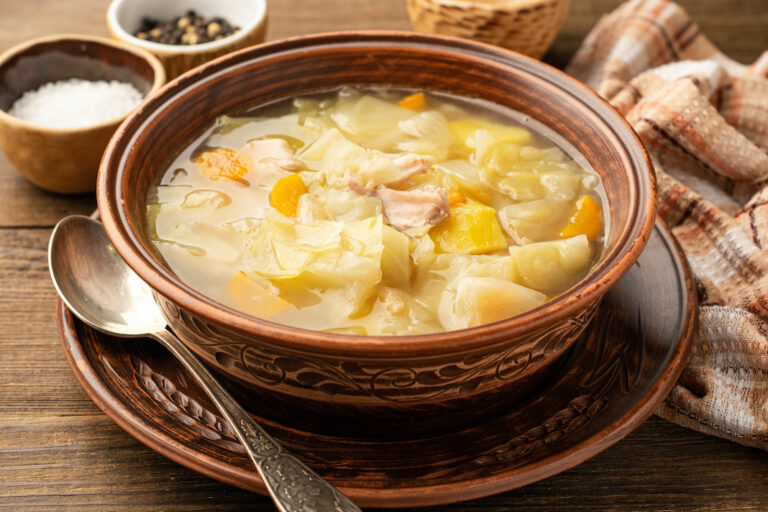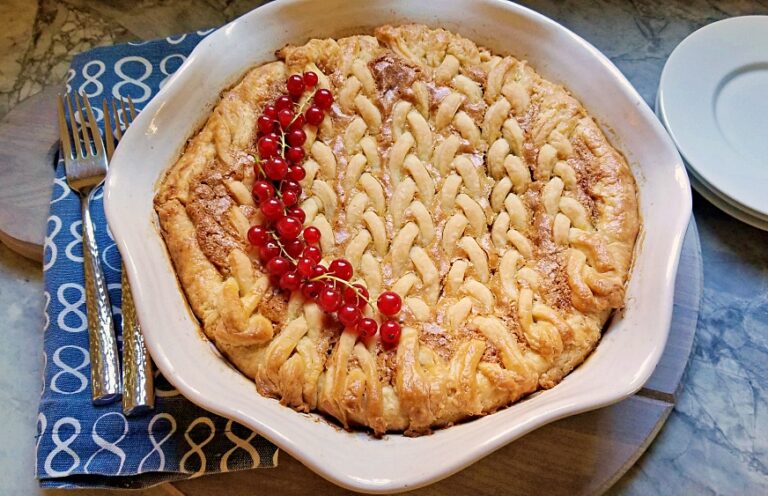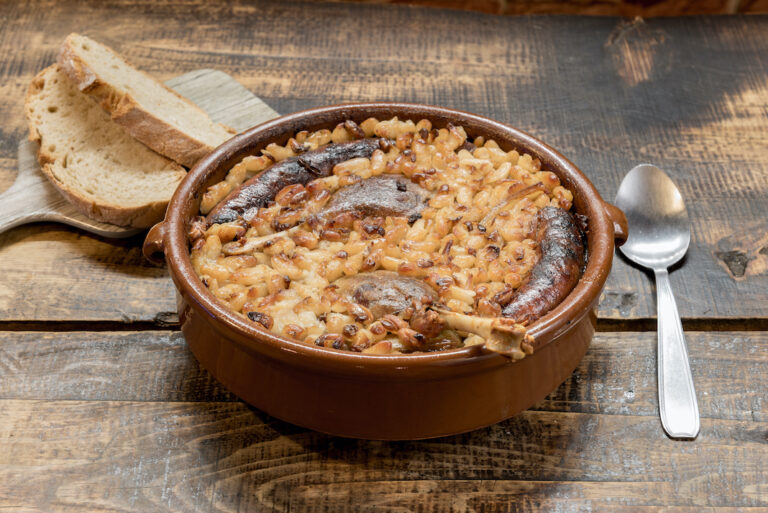It’s January, and I’m still feeling a little bilious and overstuffed from all that holiday eating, so many heavy meals of meat, baked sweets, starchy sides, and butter. Maybe you’re feeling this way too; and maybe you’re craving what I’ve been craving, something raw and crunchy and light but satisfying, with enough heft to be a meal in itself.
Which brings us to salads. Specifically, French winter salads, those delectable constructions made with sturdy, bitter cold-weather chicories, enlivened and sweetened with bursts of citrus and other fruits, enriched with nuts and cheese, tossed in a rich but light shallot-lemon-herb dressing made with excellent olive oil and a festive vinegar like champagne or Prosecco or sherry.
A French winter salad is the culinary equivalent of snowy sunlight in a bowl, like an edible trip to an Alpine ski lodge, an infusion of vitamins and minerals and clean brightness that’s also, magically, a burst of pleasure and flavor and texture in the mouth.
A few days ago, driven by this specific craving, I went to the supermarket, where I found myself reaching for endive and radicchio, frisée and escarole, filling my basket with all these fresh, nutritious greens that are in season In the wintertime. I added fresh tarragon, a large fennel, plus shallots and cippolini onions, a pomegranate, tart-sweet apples, ripe Bosc pears, lemons, and oranges, and then I headed for the nuts section to collect pistachios and walnuts, feeling very much as if I were being directed by a non-optional imperative, the instinctive hungry eater in my brain taking over. Then it led me to the cheese section, where I found Roquefort and chevre for the salads, plus an assortment of other cheeses to eat with a warm loaf of peasant bread alongside.
At home, I arranged this bounty of winter produce and vegetarian proteins as if I were posing it all for a painterly still-life. And then I got to work. I had two particular salads in mind for tonight: Endive leaves dotted with Roquefort and pear slices and walnuts, drizzled with the shallot-Dijon-tarragon dressing, plus a salad of assorted chicories and chopped fennel with orange slices, pomegranate seeds, pistachios, and chevre.
The endive salad was our hors d’oeuvre, which we munched on while the bread baked. The flavors melded perfectly, the cheese’s funky blue-moldiness with the tangy sweetness of pear with delicately bitter endive with that complex walnut meatiness.
And then, when the bread was cool enough to slice, we set it out on a board with the cheese, and poured wine and sparkling water and sat down for the main course: a bright, fresh, cold, crunchy, fruity, nutty, cheesy extravaganza. We served ourselves big platefuls and tore off hunks of bread to eat with the assortment of cheeses.
One great thing about French winter salad is that is takes energy to eat it. It’s an active experience. Our jaws were engaged and our forks were kept busy trying to get something of everything in each bite. It took a while to crunch and munch our way through it all, and when we were done, we felt zingy and energized and satisfied, but not overly full. We all had just enough room for a slice of light, tangy lemon cake for dessert.
This was the perfect meal for the aftermath of rich, meaty, gluttonous feasting. In the cold, calm, bright New Year, it was a bracing, colorful palate cleanser, a nourishing restorative.
Dressing for French Winter Salad
Whisk together, adjusting for flavor as you like:
1 cup olive oil
1/3 cup champagne or prosecco vinegar, plus more to taste
2 T Dijon mustard
the juice of 1 lemon
the juice of 1 orange
3-4 shallots, minced
1 cippolini onion, minced
3 garlic cloves, minced
2 T fresh tarragon, minced, more to taste
1 tsp. each salt and black pepper
French Winter Salad
In a salad bowl, put an assortment of cut winter greens, mostly chicories: endive, radicchio, frisée, and escarole, as well as romaine, kale, dandelion greens if you like, along with sliced fennel, both bulb and feathers.
Add one or more of the following fruits: orange or grapefruit segments, sliced pear, chopped apple, sliced figs, pomegranate seeds.
Add nuts: walnuts, pistachios, almonds, pecans, cashews, or pine nuts.
Now cheese: Roquefort, chevre, burrata, Manchego, Gorgonzola, shaved Parmesan or Romano, or feta.
Other possible additions: green or black olives or capers; dried fruit like cherries, apricots, currants, or raisins; thinly sliced radishes or red onion, raw cauliflower or Brussels sprouts; thin slices of roast winter squash; halved hard-boiled eggs; pickled beets; chopped celery; roast spiced pepitas.
Drizzle with dressing, toss and enjoy!
Kate Christensen is a novelist, memoirist and food writer based in Taos, New Mexico. This essay is part of a monthly series about French food called Bouffe, created and written exclusively for Frenchly by Kate Christensen. Her books, Blue Plate Special, How to Cook a Moose, The Last Cruise and more can be purchased here, on Amazon. Her next book, a novel, will be published in 2023.
All photos are courtesy of the author. To see more of Kate’s photos of food, family, the writing process, books and her darling pups, visit her on Instagram, here.

